These Indianapolis neighborhoods, some once predominantly Black, are becoming more white
Darren Bunton was just 10 years old when white families in his neighborhood began to pack up and leave overnight.
The families that welcomed his own — one of the first Black families in the Keystone-Monon neighborhood on the city's north side — were part of a community that participated in block parties and parent-teacher association meetings.
But when the 1980s hit and the Black population began to grow, he said, so did white flight.
"When the change took place, the most emphatic change took place, there was no goodbye — they were just packing up," he said. "Sometimes you'd see the moving trucks in the driveways and in front of the houses at 8, 9 o'clock at night, and then by sunrise the entire house was empty and the families had departed."
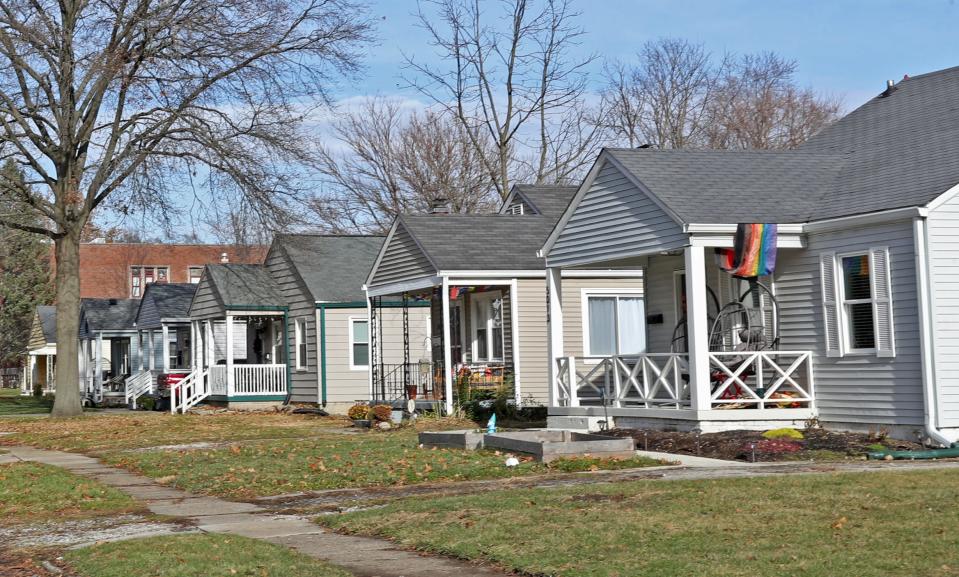
The neighborhood tucked behind the State Fairgrounds, lined with modest homes, grew to feature a majority Black population. An African Methodist Episcopal Church sits in a corner along Crittenden Avenue. The Indianapolis Black Firefighters Association set up headquarters along 46th Street in 1992.
By 2010, roughly 63% of residents were people of color or Hispanic, according to census data analyzed by the SAVI program at Indiana University-Purdue University Indianapolis.
But now, the latest 2020 census results show that the neighborhood is once again becoming more white — losing roughly 37% of its Black population in the past decade, according to SAVI.
Indianapolis census 2020: Indianapolis is growing and is more diverse
It's one of five growing Indianapolis neighborhoods trending in the opposite direction of Marion County overall, according to SAVI's analysis. Instead of seeing an overall increase in people of color, it is becoming more white.
The decline in the number of residents who fall outside of the white, non-Hispanic category is driven solely by a loss in Black population, which has dropped while the number of Asians and other races are increasing. The Hispanic population, which the U.S. Census Bureau classifies as an ethnicity that can encompass both white and nonwhite Hispanic residents, has also grown.
Similarities abound between these neighborhoods, all contiguous, located just north of downtown: Keystone-Monon, Mapleton-Fall Creek, Butler-Tarkington, Meridian-Kessler and what SAVI deems the near northside.
Most of these spaces, once mainly white areas, became home to Black families during the time of white flight, desegregation and other societal changes that arose from roughly the 1950s and onward.
Redlined: Boundaries of 'redlining' maps still etched into Indianapolis neighborhoods
Now, many residents are bombarded with offers to sell their historic homes. Trendy new businesses and attractions pop up along the main streets.
Median assessed home values and median income have increased in most of these neighborhoods between 2010 and 2019, according to American Community Survey data analyzed by SAVI. The poverty rate has mostly decreased.
Is it gentrification? The answer depends on who you ask. It may depend, too, on the dynamics within each neighborhood, which still have unique histories of their own.
Nearly all of these neighborhoods are undergoing rapid gentrification — and have been for some time, said Susan Hyatt, an anthropology professor at Indiana University-Purdue University Indianapolis.
"They're pretty close to downtown and those are the areas where gentrification has taken place extremely rapidly," Hyatt said. "And as gentrification takes place I think more and more people are getting forced out."
The data begs a larger question, Hyatt noted: where are these people of color moving to?
The answer is unclear, although a number of neighborhoods in SAVI's data are showing an increase in the Black population. Those include the Ameriplex area on the south side in Decatur township and the Valley Mills neighborhood area right next to it.
There's a documented wealth gap between white and African-American families that could explain why these five downtown-adjacent areas are becoming more white as the income levels and home values are increasing, said Timothy Maher, professor emeritus of sociology at the University of Indianapolis.
"It's significant enough so when you buy a house, it's not just 'Can you afford to pay a mortgage?'" Maher said. "You have a job — you have to have money up front, you have to have a down payment, and in recent years with the bidding wars, people are paying over asking (price)."
'This is real': An Indianapolis Black homeowner had a white friend stand in for appraisal. Her home value doubled.
Still, some of these areas reflect a growing racial and ethnic diversity. USA Today data show that in many census tracts within these neighborhoods, the probability of two residents having a different race or ethnicity has increased.
Yet as neighborhood groups, community development and residents plan the future of their neighborhoods, one common theme surfaces: keeping it affordable.
Here's a look at the history and demographics of each of these five neighborhoods, supplemented with data from SAVI, 2020 census results and the newly launched online Indy Encyclopedia. SAVI's data on Black, white, Asian and other races exclude those who may also identify as Hispanic, which is separated into a distinct ethnic category.
Keystone-Monon
Bunton's parents still live in the quaint farmhouse where he grew up along 49th Street. Now, it sits just 500 feet from one of the city's hippest attractions: the Monon Trail, completed in 2003.
Once controversial, now beloved: The Monon Trail's transformation
The Keystone-Monon neighborhood, or the "Fairgrounds" runs from 38th Street to 54th Street between the Monon and Keystone Avenue.
Since 2010, its total population has grown 7.5% from 4,295 to 4,615, according to SAVI. The data excludes a small portion of the neighborhood between 52nd and 54th Streets.
Its Black population shifted from 2,313 to 1,447 — making up roughly 54% of the total population in 2010, but just 31% in 2020.
A co-working space and brewery exists in the former Double 8 warehouse where Bunton used to work. One company offering to buy houses for cash has set up an office along 52nd Street.
Bunton, who returned to the neighborhood after years away, doesn't think of the area as being gentrified.
Instead, he calls it redevelopment. That change, he said, is what is driving him back. He has started a land trust to develop four to eight median-income homes through 2024.
"We're creating social networks. This is a place for people to gather," he said, sitting in the co-working space in the very Double 8 building where he used to work. "This is an incubator for entrepreneurship, this is a workspace. These things didn't exist in either one of those areas, those generations. But it does now."
Mapleton-Fall Creek
In 1965, Joe King borrowed $378 from his grandmother to buy his house on College Avenue — right next door to his mother, who had recently moved into the area. He took over the $5,000 second mortgage that the former owner took out on the property.
He and his family were among the first Black residents to settle in the neighborhood. His mother, Evelyn Parks, later became the first president of the Mapleton-Fall Creek Neighborhood Association.
The neighborhood sits between Fall Creek Parkway and 38th Street, bounded to the west by Meridian Street.
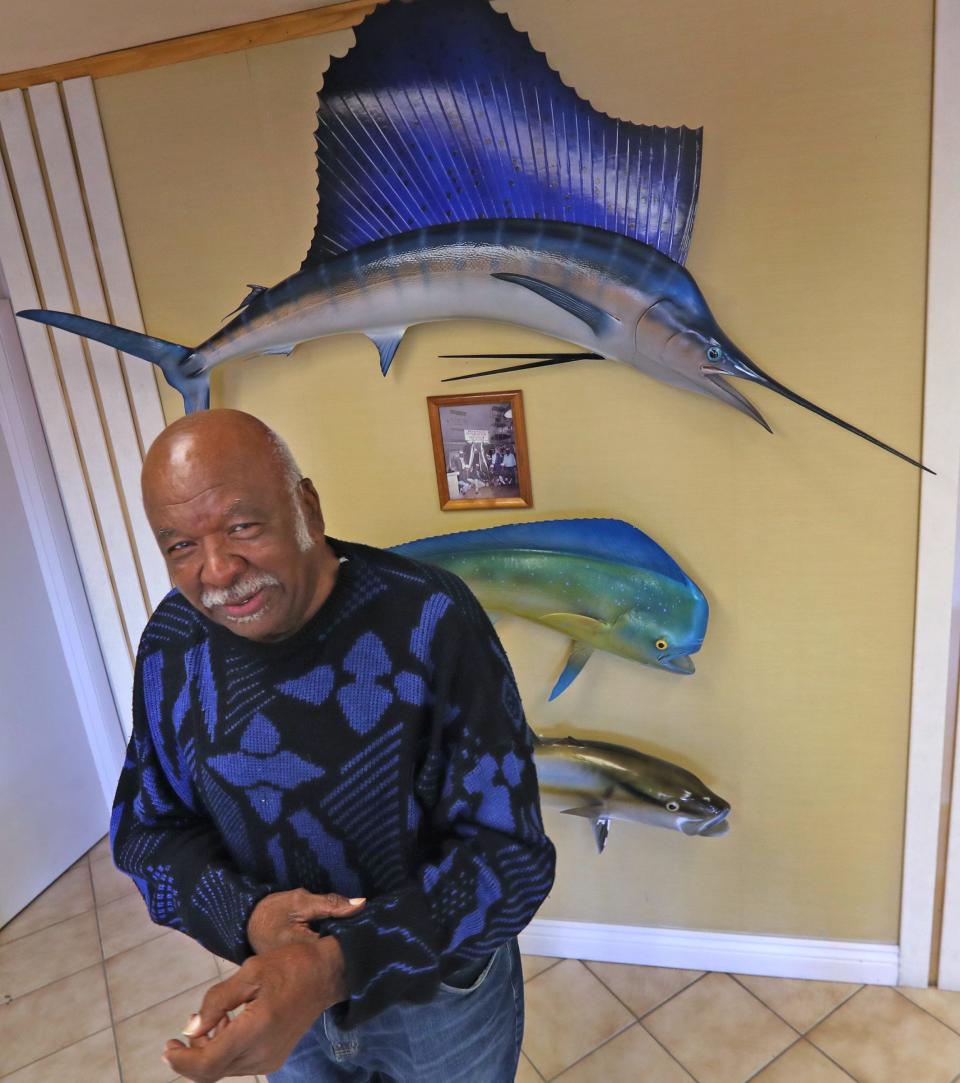
In 1960, just 2% of the population was Black, according to the Indy Encyclopedia. By 1983, that figure was 87%.
Black residents, who made up 67% of the area in 2010, now constitute roughly 50%, dropping from 4,345 to 3,401 in the past decade. That's caused the overall number of residents falling outside the white, non-Hispanic category to decline by 9.3% since 2010.
The white, non-Hispanic population has increased from 1,753 to 2,538, nearly 45%.
The problem, King said: his neighbors are jumping at the opportunity to sell their houses to investors, not realizing the area's potential.
"You've got to pay attention to what's happening," he said. "When you see they're building a quarter of a million dollar houses, something is changing. So why would you want to move?"
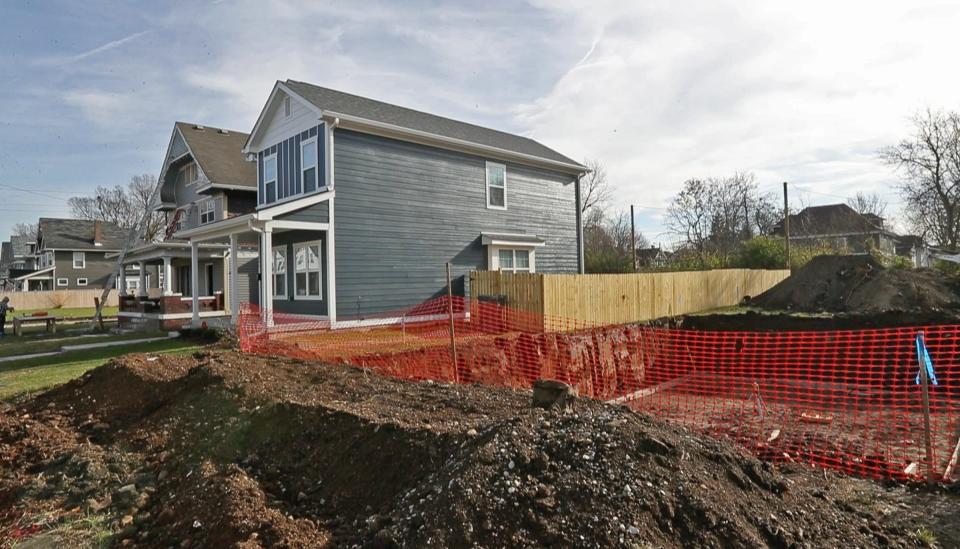
Other Indianapolis neighborhoods have lamented the highly pressurized tactics of home-buying businesses that redevelop homes for a profit. The practice has caught the attention of housing advocates, who worry such businesses are targeting people of color and offering too low of a price for homes.
Seller beware: In hot house-flipping industry, scams abound
Nowadays, Mapleton-Fall Creek symbolizes a booming housing market with potential for even more development.
A formerly empty lot on 31st Street and Broadway Street, up for sale in 2019, now features a new house listed for roughly $350,000 on Zillow. An independent coffee shop sits on the corner of Fall Creek Parkway and College Avenue.
All this change has happened quickly.
Travis Tatlock, president of the neighborhood association, bought two lots from the city for a total of $2,800 in 2016. He built a new house for roughly $215,000.
Even then, he said, it was nerve-wracking when he and his girlfriend settled here in 2017. There wasn't much new development in the area.
"My parents kind of thought I was crazy," said Tatlock, who is white. "The lots were overgrown and stuff like that. There wasn't brand new housing being built."
The house behind their own on Park Avenue that used to feature squatters has since been resold and spruced up.
"When you do a 360 view of just where we're sitting in our house," he said, "everything has changed around us."
Elan Daniel, CEO of the Mapleton Fall Creek Community Development Corporation, is unsurprised by the shift. Keeping the area affordable for the future is one of the corporation's major projects.
"There's only so much that our organization can do to sort of stop or accelerate any potential changes that we want to see happen," he said. "Today, the market is far more powerful than we are."
Using federal funding provided through the city's Lift Indy program, the corporation will develop 11 units of affordable housing scattered throughout the neighborhood. The corporation is also planning a 56-unit rental building on the vacant lot of corner of 29th Street and Central Avenue.
King, meanwhile, has watched as his neighbors sell their homes to real estate investors for around $80,000, while he sees other homes sell for well into the $200,000 range.
"The Blacks getting that money, moving out of the inner city — they can't get back," he said. "That's why the neighborhoods are changing."
Butler-Tarkington
Marion Edward and Roberta Griffin first settled in the Butler-Tarkington neighborhood in 1955, one of the first Black couples to arrive as people of color migrated above the 38th Street boundary historically seen as a racial and socioeconomic dividing line.
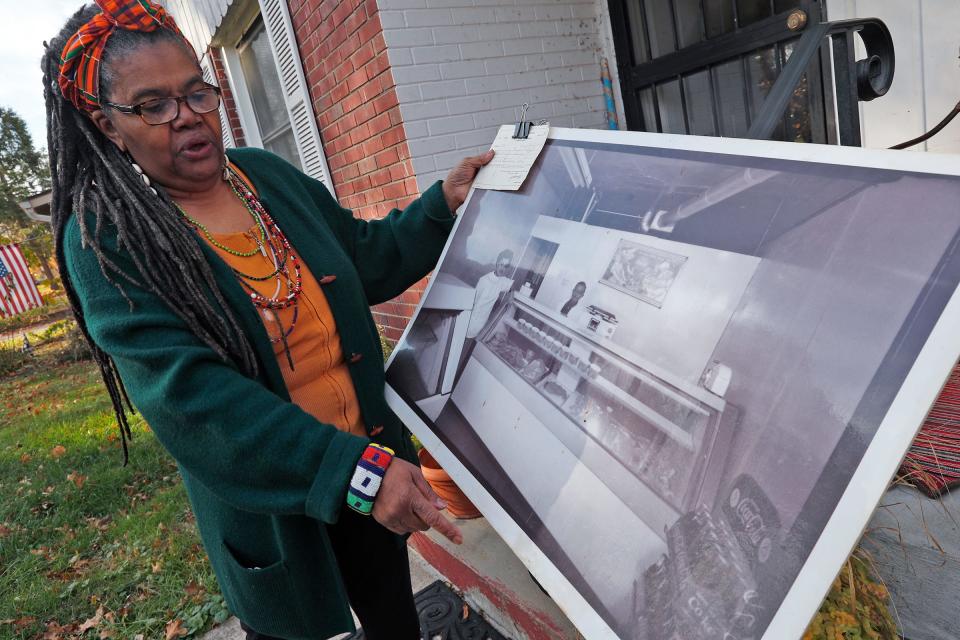
The neighborhood in which they later raised their children and grandchildren grew to feature a strong Black upper-middle class. The Griffins were among them: they purchased the building at the corner of 42nd Street and Boulevard Place, where they operated a number of businesses — including Salon de Ro-Mar and Allied Bond Agency.
This neighborhood, bordered by 38th and Meridian Streets and the old Central Canal, has a unique history: the neighborhood association, founded during the racial integration period of the 1950s and 1960s, sought to be an "inter-racial" group that fostered peace and co-existence.
By 1960, this formerly predominantly white middle-class neighborhood had a Black population of 30%, according to the Indy Encyclopedia.
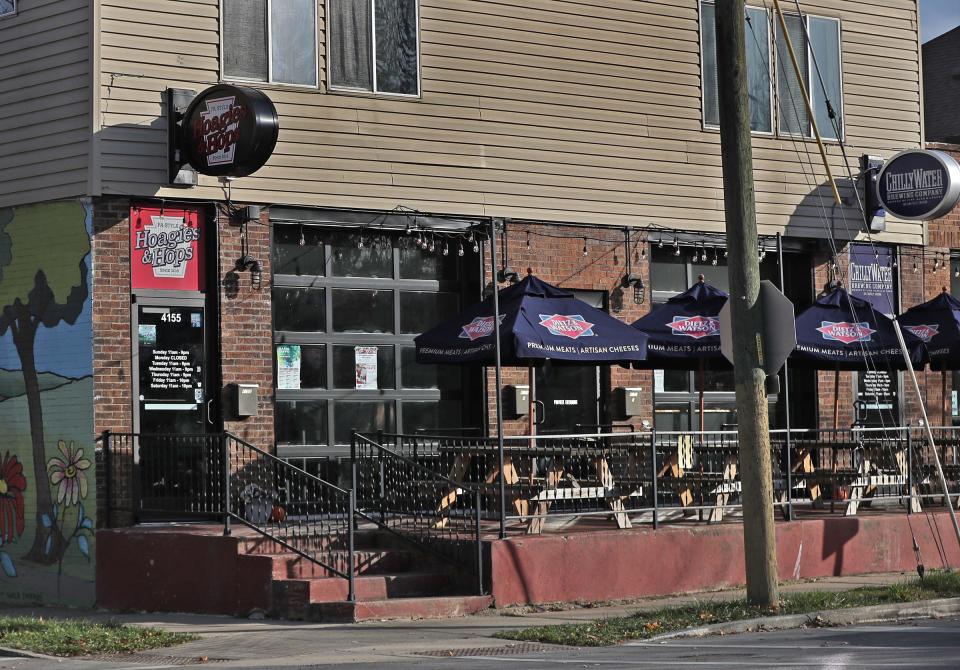
Now, the area of Butler-Tarkington and Rocky Ripple — two neighborhoods that SAVI lumps together in its analysis — has lost 25% of its Black population, declining from 2,727 to 2,035.
The boundary lines may slightly skew the results for Butler-Tarkington alone: the small, secluded Rocky Ripple neighborhood has long mostly been white.
But among census tracts, the southern half of Butler-Tarkington running from 38th Street to 43rd Street has seen a nearly 25% drop in the number of Black residents, from 2,052 to 1,545, according to data analyzed by USA Today. Unlike the SAVI data, that figure includes both Hispanic and non-Hispanic Black residents.
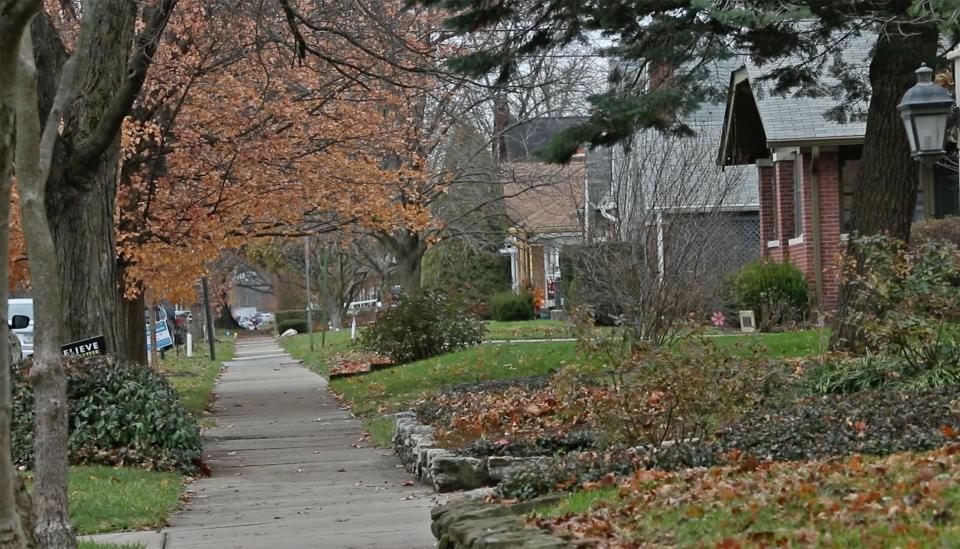
The white population in this tract has increased by nearly 50%, from 1,003 to 1,502, now making up nearly 44% of the community.
Yet even from 44th Street, Naeemah Jackson — the Griffins' granddaughter — still sees the changing demographics in the house her mother bought.
Jackson says the story of Butler-Tarkington is not one of gentrification — a term she dismisses, noting its classist etymology in the "gentry" who owned land and the peasants they displaced.
Instead, she sees the children and grandchildren of original Black homebuyers sell their homes for quick cash.
"It makes me sad, because I know how hard they worked to buy these homes," she said.
"But that's life, right?" she added. "Everything must change."
Meridian-Kessler
The Meridian-Kessler neighborhood runs from 38th Street to Kessler Boulevard, sandwiched between Meridian Street and the Monon trail.
The neighborhood association here also sought an integrated neighborhood after its founding in the 1960s, according to the Indy Encyclopedia. Here, larger historic homes line the streets, with the majority of houses built before 1940.
The Black population has decreased nearly 38% from 2,865 to 1,784 since 2010, although Asian, Hispanic and residents of other races have increased. The white population has increased its majority, now constituting nearly 77% of the population.
Census-tract level results show the area growing in population but losing people of color is also in the southern portion of the neighborhood.
Despite racial integration efforts in both Meridian-Kessler and Butler-Tarkington, 42nd Street remains as sort of a demarcation line where diversity decreases, said Michael McKillip, executive director of Midtown Indy.
"You've seen that diversity never really creep very far north of 42nd Street all of that time," he said.
Housing stock changes south of 42nd Street, too, he noted.
And as housing prices in northern Meridian-Kessler have become less affordable, there has been a higher demand and a lot of property flipping south of 42nd Street, McKillip said.
"So you've seen an influx of wealthier, whiter families into those neighborhoods," he said.
Near Northside
The changes in the "near northside" neighborhood have most prominently occurred in two census tracts that span three neighborhoods: Meridian Highlands, Fall Creek Place and Friends and Neighbors.
The Black population in those tracts collectively decreased from 2,577 to 1,954, a 24% drop, according to an USA Today analysis.
The white population, meanwhile, has grown across these two tracts from roughly 35% of the population in 2010 to nearly 49% today. Unlike the SAVI data, the figures for white and Black residents include both those who are Hispanic and non-Hispanic.
The area includes Fall Creek Place, one of the city's most ambitious neighborhood redevelopment projects. The city pumped over $31 million in federal and other funding into the area in the late 1990s and early 2000s. The neighborhood runs from Fall Creek Parkway to 22nd Street north-south and Broadway Street to Meridian Street east-west.
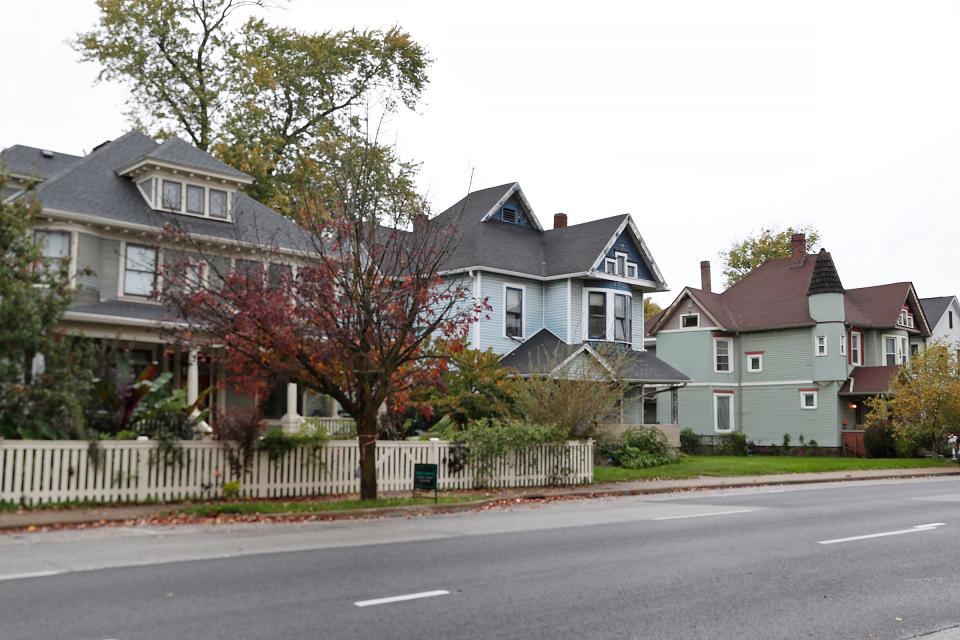
It was a complete turnaround for the neighborhood formerly known as "Dodge City" in the 1990s.
A fight for identity? Fall Creek Place affordable housing project strikes discord
But now, the city has taken notice of changes: recognizing the fear of displacement and higher-priced housing stock creeping east of this neighborhood into Martindale-Brightwood, the city plans to create a specialized taxing district to fund affordable housing in the Hillside area just east of the neighborhood.
USA Today contributed to this story.
Call IndyStar reporter Amelia Pak-Harvey at 317-444-6175 or email her at apakharvey@indystar.com. Follow her on Twitter @AmeliaPakHarvey.
This article originally appeared on Indianapolis Star: Five growing areas that have decreased in people of color since 2010

